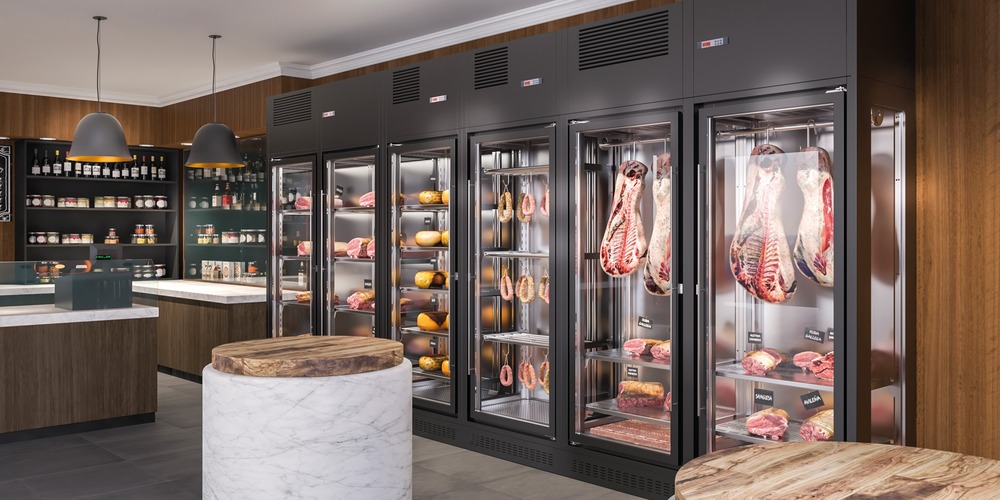For meat to mature correctly, the weather is of paramount importance. It was formerly quite tricky for many butchers to keep this. The format of the dry ageing cabinet has allowed for its application in private homes while resolving the issue mentioned earlier.
What You Need to Know About Dry Age Cabinet?
Dry-aging beef has been done for generations. Dry-aging is still done, although with considerably more sophisticated methods these days. The primary challenge of dry-aging meat before developing dry age cabinet was ensuring the ideal environment for the process. Meat that has been aged has a deeper taste and becomes more tender. Dry-aging meat used to be something only butchers did. Dry-aging cabinets, however, have made it possible for anybody to acquire one and age their meat. Up-to-date dry-aging cabinets not only help the meat age properly, but they also serve as eye-catching displays at the butcher shop.
What features should you look for in a dry aging refrigerator?
A precise electronic temperature control that intercepts ambient temperature changes is essential for a successful maturing cabinet. When the body and environment are at odds, spoilage occurs.
Adjusting the Thermostat
Meat, in particular, can quickly spoil if it’s too hot or cold. Dangerous bacteria like salmonella can multiply in storage. Therefore, it’s crucial to begin cooling the food correctly and consistently. This pertains to the maturing process and the time immediately following the slaughter. Meat requires an ambient temperature of around 1 to 3 ° C to dry, transforming it into the prized Dry Aged Beef.
Possessing the Proper Environment
Meat is also quite susceptible to changes in humidity levels. Dry Aged Meat requires an air environment with low relative humidity to dry appropriately. The water would not evaporate if the temperature were higher. Many manufacturers include water tanks in the unit to maintain humidity in the fridge section. Two significant drawbacks to this method are that it needs an independent water supply and that the tanks are especially prone to the growth of bacteria. With this in mind, the DRY AGER® cabinet’s creators developed the clever HumiControl technology.
Sufficiently Ventilated
You are familiar with “stale air” if you have come home from a hard day and found the air uninviting. When there are no living things to use, the oxygen in the air will be deleted. And the same holds for the fridge section. However, oxygen is essential for oxidation in the meat, resulting in the signature dry-aged crust. Furthermore, “standing” air is a breeding ground for bacteria. Refrigerators need to have plenty of airflow. The DRY AGER® has an activated carbon filter, a sterilizing box, and the AirReg ventilation system. This ensures that the fridge’s air is always pure and healthy.
Conditions Are Ideal
- 0 to 4 degrees Celsius is perfect.
- Over that, the bacteria and viruses flourish. The enzymes stop working when the temperature drops below freezing, and the meat never ripens.
- Humidity levels between 80% and 85% are ideal.
- Humidity levels between 60% and 90% may be adjusted with little effort. This modifies the taste just enough to make the finished product unique. However, mold attacks become more likely in more significant numbers.












